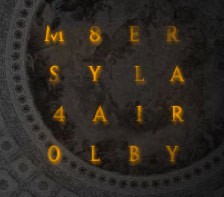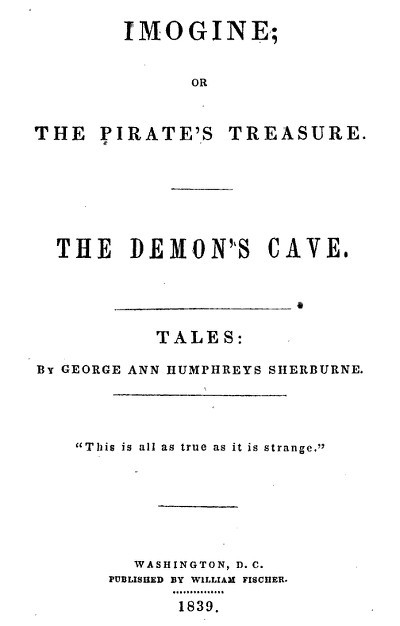The Daily Grail has today’s hot cipher history story: that Dan Brown’s soon-to-be-released novel “Inferno” is somehow based around the Voynich Manuscript. Apparently, the proof of this particular pudding is, well, a cipher, one apparently hidden in plain sight on Brown’s website:-

In Rolf Harris’ immortal phrase, “Can you tell what it is yet?” I hope you can, because all it is is… a 4×4 transposition cipher of “MS 408 YALE LIBRARY”. Yes, that’s it. Which is in itself a fairly underwhelming starting point, considering that the Voynich Manuscript isn’t MS 408 in “Yale Library”, but in Yale University’s Beinecke Rare Book & Manuscript Library. But (of course) that wouldn’t fit in 16 letters. 🙂
So, the story of the story is that Dan Brown will once again be wheeling out his “symbologist” Robert Langdon in a Renaissance-art-history-conspiracy-somehow-impinges-on-the-present-day-with-terrible-consequences schtick, but this time in Florence with Dante’s “Inferno” right at the heart of it (hence the title), with only the poor, much-abused Voynich Manuscript for company.
One part I’m not looking forward to is what Brown will have Robert Langdon make of the Voynich: for of all the mysteries I’ve ever seen, the Voynich is surely the least obviously symbol-laden. There’s no “sacred geometry” there, no gematria, no heresy, in fact no religion at all: just about all you could do is tie in the Voynich ‘nymphs’ with the same kind of alt.history “goddess” thing that Brown tried to stripmine in The Da Vinci Code… but all the same, that looks fairly hollow to me. I guess we’ll have to see what angle he does take… at least we won’t have long to wait (14th May 2013).
For me, the central contrast between Dante’s Inferno and the Voynich Manuscript is that they are diametrically opposite in referentiality: while the Inferno (and in fact the whole Divine Comedy) reaches out to touch and even include all of human culture, the Voynich Manuscript’s author seems to have worked with the same kind of monastic intensity to ensure it appears to refer to nothing at all. So, when Dan Brown collides the everything-book with the nothing-book, what kind of po-faced bathos-fest are we in for?
As an aside, I don’t see any numerology in the (original) Inferno: and considering the amount of effort Dante put into satirizing astrologers, alchemists, politicians, liars, frauds and the like in their aptly tortured circles of hell, I’m reasonably sure he’d mete out the same kind of punishment to numerologists. And probably to symbologists, too. And (if we’re lucky) to bad novelists… though you’ll have to put your own candidates forward for that, I’m far too polite. 😉
However, the bit I dread most is when people start to realize that Dante Alighieri’s Inferno was only the first part (of three) of his Divine Comedy: and with the current Hollywood craze for trilogies (The Hobbit trilogy, really?), what are the odds Dan Brown will extend any success with this book out into his own money$pinning Dante-based series, hmmm? The “Ka’chingferno” three-parter, no less!
Update: Erni Lillie upbraids me (and rightly so) in a comment here for omitting to mention his substantial 2004 (though the Wayback Machine only has a copy from 2007) Voynich Inferno essay, where he proposed that the nine “rosettes” on the Voynich Manuscript’s nine-rosette page might well represent the nine layers of Dante’s Inferno. My own experience of working on that particular page would place it closer to Purgatory, but perhaps we’re closer than medieval theologians would have it. 🙂
Truth be told, I did remember that I had forgotten something to do with Dante and the Voynich, but couldn’t for the life of me remember what it was I’d forgotten. And now that I’ve found it again, I was delighted to read it all over again, Renaissance warts and all. So, hoping that it’s OK with Erni to bring his work to a new generation of interested readers, here’s a link to a copy of his paper The Voynich Manuscript as an Illustrated Commentary of Dante’s Divine Comedy. Maybe it will turn out to be what Dan Brown’s new book plagiarizes was amply inspired by this time round, who knows? 😉
Personally, I suspect the smart money is indeed on Brown’s having the Voynich’s nine-rosette map turn out to be a map: with the devastating twist *yawn* that it actually represents a physical map of Dante-related locations in Florence, which Robert Langdon is then able to decode at speed thanks to his encyclopaedic knowledge of all things symbolic and Florentine, which ultimately leads him to the dark secret at the heart of a centuries-old conspiracy which he and his unexpected accomplice must choose whether to reveal to the horror of the world.
You know, basically the same as all his other books. 😉
Anyway, looking forward to the launch party at the Duomo, darling. Of course I’d like more olives, thanks for asking, and isn’t the San Giovese simply, errrm, Divine? 🙂

